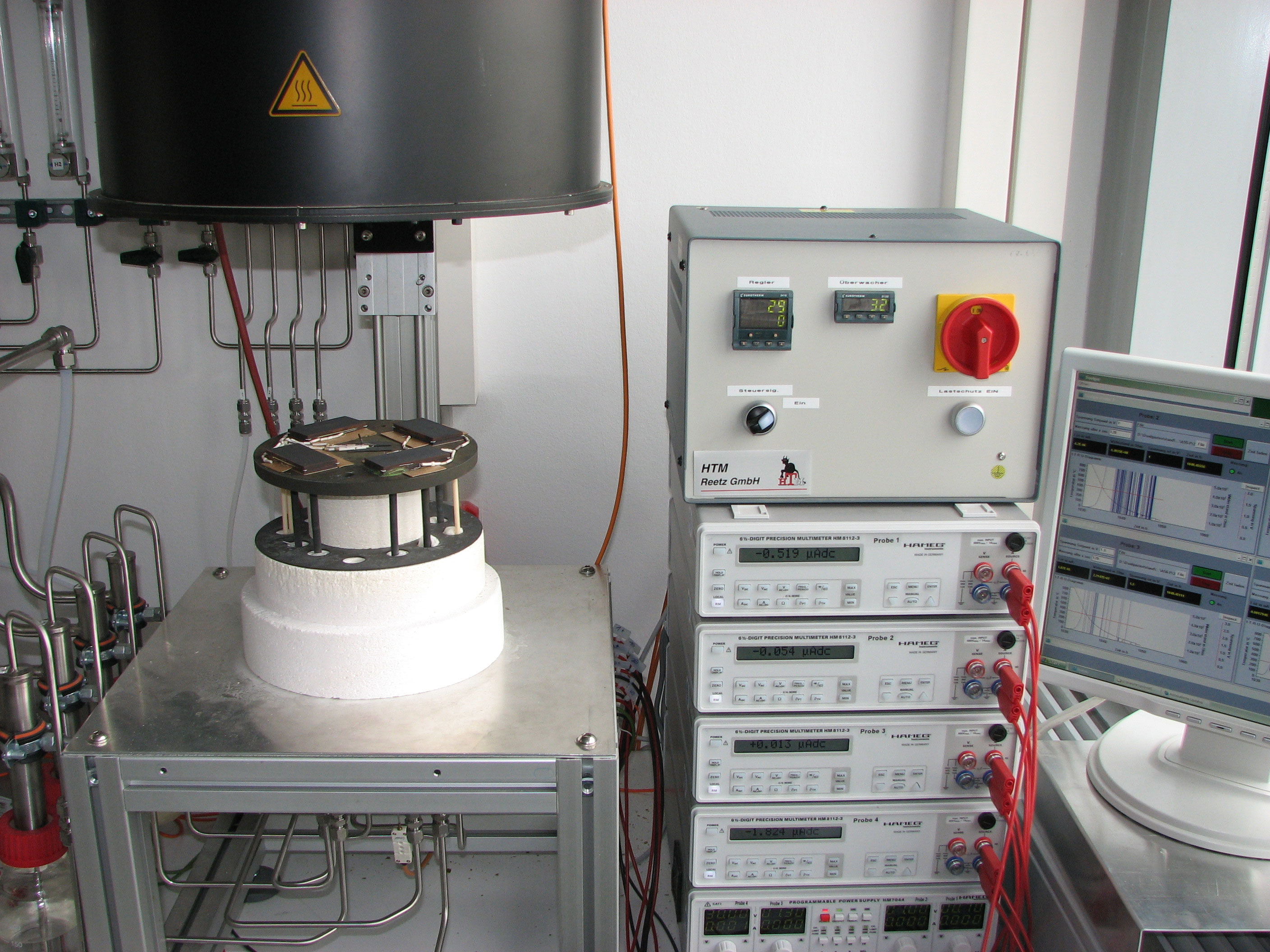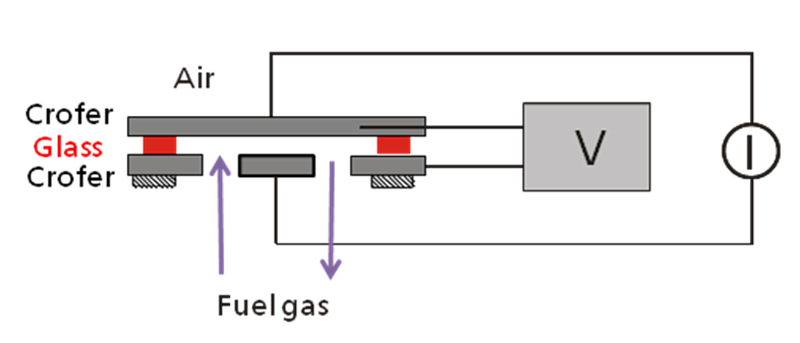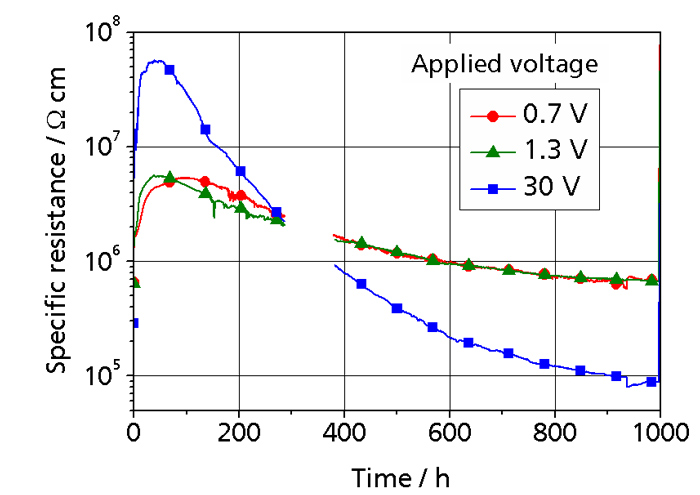


Components of ceramic high temperature fuel cells (SOFC) such as metallic interconnectors (Crofer22APU, ITM/LC, CFY) and ceramic electrolytes (ZrO2-based) are sealed by special solder glasses. The glasses have to seal the air and fuel gas containing component of a SOFC stack against each other, where additionally electrical potentials between 0,7V and 1,3V are applied across the sealing seam. At these high temperatures reactions and migration processes of ions between the glassy phase the joint materials and the environmental atmospheres occur, which in turn cause degradation processes in the sealed components. According to this the sealing glasses must fulfill high requirements, because the amorphous fraction of the partial crystalline microstructure of the sealing glass forms a highly viscous liquid what allows a high mobility of ions. Especially the interfacial regions in contact with metallic material can be the subject of unwanted reactions leading to a declined adhesion of the sealing glasses.
The degradation processes can be simulated in various experimental testing devices. A dual atmosphere furnace allows the characterization of sealing glasses in model sealings at temperatures up to 1000°C where inside the sample a reducing and outside the sample an oxidizing atmosphere prevails. Additionally electrical loads up to 30V can be applied to the samples and their electric resistance can be measured insitu during testing.